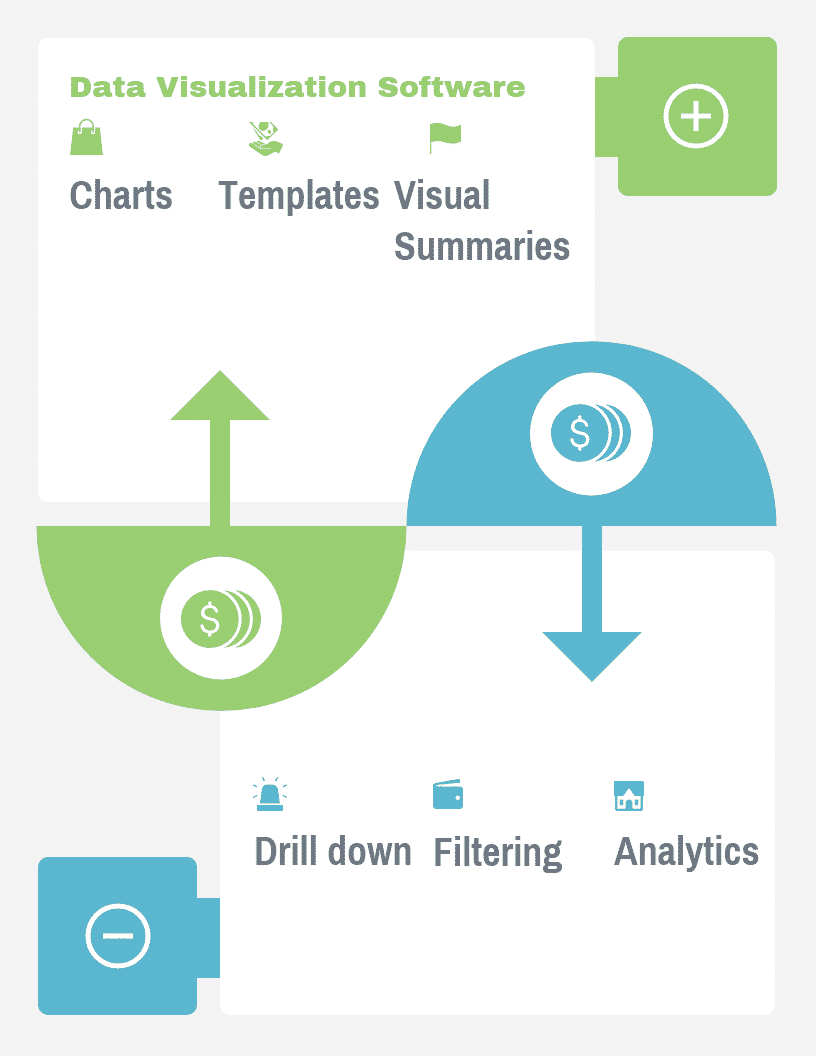Tube Rank: Your Guide to Video Success
Discover tips and insights for optimizing your video presence.
Seeing is Believing: Transforming Data into Captivating Visuals
Unlock the power of visualization! Discover how to turn data into stunning visuals that captivate and engage your audience.
The Power of Data Visualization: How Graphics Enhance Understanding
The power of data visualization lies in its ability to transform complex information into easily digestible graphics. When data is presented through visuals like charts, graphs, and infographics, it allows viewers to grasp trends and patterns that might be obscured in raw data. For instance, a well-designed bar chart can quickly convey differences in sales figures across different regions, while a pie chart effectively illustrates market share distribution. By enhancing the aesthetic appeal of data, these graphics not only attract attention but also foster a deeper understanding among audiences who may not be data-savvy.
Moreover, graphics enhance understanding by providing context and highlighting key insights. Consider a heat map that displays the intensity of customer engagement across various digital platforms; it offers a visual representation that can prompt strategic decisions and adjustments. Furthermore, incorporating elements such as interactive dashboards allows users to manipulate data and explore various scenarios on their own, making the learning process more engaging and personalized. In today’s information overload era, the significance of data visualization cannot be overstated, as it equips individuals and organizations with the tools to interpret data swiftly and effectively.

5 Essential Tools for Creating Stunning Data Visuals
In the age of information overload, creating stunning data visuals has become essential for effective communication. Whether you're a marketer, educator, or business analyst, data visualization tools can transform complex datasets into engaging and understandable graphics. Here are five essential tools that are indispensable for visualizing data:
- Tableau - Known for its powerful analytics and intuitive interface, Tableau allows users to create interactive, shareable dashboards that illustrate trends, key performance indicators, and other metrics in real time.
- Canva - This user-friendly design platform offers a plethora of templates and design elements, making it easy to create visually appealing infographics and charts without any prior design experience.
- Microsoft Power BI - Ideal for enterprise-level solutions, Power BI integrates seamlessly with Microsoft applications and provides extensive data modeling capabilities to create rich reports and visuals.
- Google Data Studio - A free and collaborative tool, Google Data Studio enables users to create customizable dashboards using data from multiple sources, making it an excellent option for teams.
- Infogram - Specializing in infographic creation, Infogram offers an array of templates and data import options, allowing users to turn data into stunning stories that capture attention.
When choosing a tool for creating stunning data visuals, consider the unique features and capabilities of each platform. Tableau and Power BI excel in deep analytics and professional reporting, while Canva and Infogram shine in visual aesthetics and ease of use. And if you prefer a no-cost option, Google Data Studio provides robust functionality for teams seeking to collaborate on data presentations. By leveraging these essential tools, you can effectively communicate your insights and make your data visually appealing to engage your audience like never before.
How to Choose the Right Chart Type for Your Data Story
Choosing the right chart type for your data story is crucial to effectively communicate your insights and engage your audience. Different types of charts serve distinct purposes, making it essential to align your chart choice with the narrative you wish to convey. For instance, if you're looking to compare values across different categories, a bar chart is an excellent choice, while a line chart is more suited for illustrating trends over time. To help you make the right selection, consider the following questions:
- What is the main message you want to convey?
- What type of data do you have?
- Who is your target audience?
Once you've clarified your goals, it's equally important to understand the nuances of different chart types. Pie charts, for example, are effective for demonstrating parts of a whole, but can quickly become confusing if there are too many segments. On the other hand, scatter plots are great for displaying correlations between two variables. In summary, your choice of chart type should not only reflect the data at hand but also enhance the story you want to tell. By addressing both the format and the purpose, you can craft a compelling visual narrative that resonates with your audience.